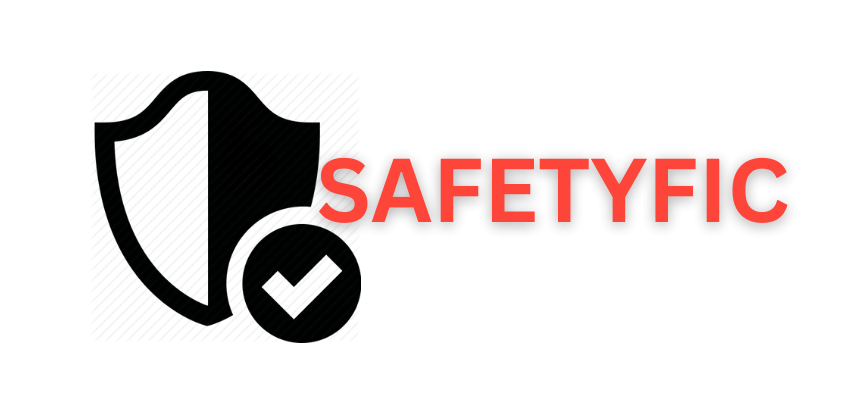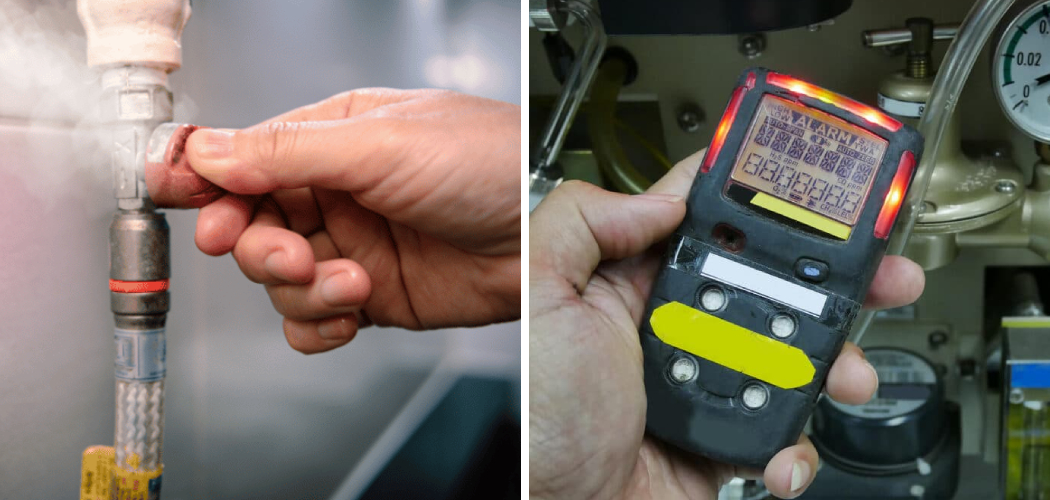Are you worried about a gas leak in your home or workplace? Don’t worry, detecting a gas leak is not difficult and can be done with some simple steps.
Gas leaks are a serious hazard that can lead to dangerous situations, including fires, explosions, or health complications. Detecting a gas leak promptly ensures safety and prevents significant harm. While some gas leaks are easily noticeable through smell or sound, others may require closer attention and awareness of subtle signs. Additionally, it’s crucial to have a plan in place for dealing with gas leaks and knowing who to contact for help.
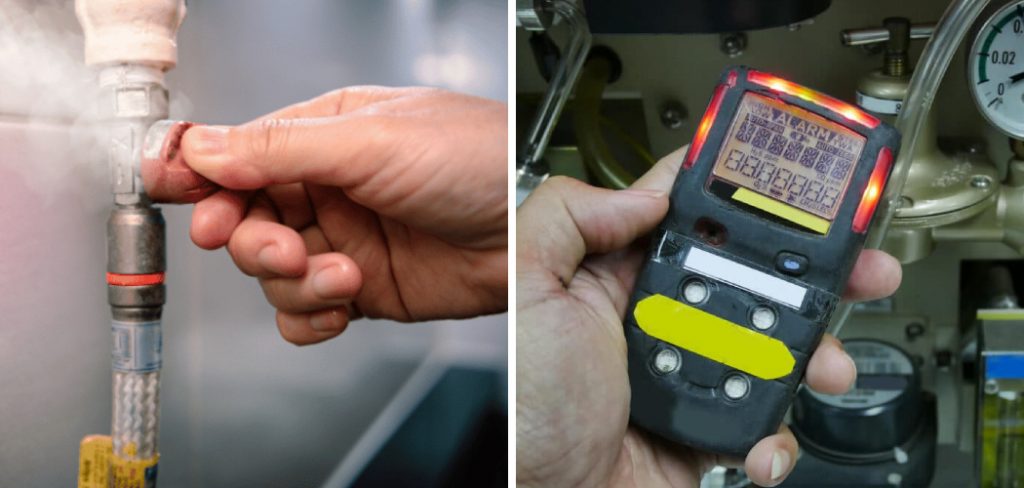
This guide on how to detect a gas leak will provide you with practical tips and methods to identify a gas leak, ensuring the safety of your home or workplace.
What Are the Benefits of Detecting a Gas Leak?
Detecting a gas leak early on can have numerous benefits, including:
- Avoiding Potential Health Hazards: Gas leaks can cause serious harm if inhaled, such as dizziness, nausea, and even death.
- Preventing Fires and Explosions: Gas leaks are highly flammable and can ignite with the slightest spark or flame, leading to dangerous fires or explosions.
- Saving Money on Utility Bills: A gas leak can increase your utility bill due to wasted energy. Detecting and fixing the leak promptly can save you money in the long run.
- Protecting the Environment: Natural gas is a nonrenewable resource, so conserving it is essential. By fixing leaks, we can prevent the release of harmful greenhouse gases into the atmosphere.
- Avoiding Legal Consequences: Gas leaks are a safety hazard and a legal issue. If someone gets injured or property is damaged due to your neglected gas leak, you could face serious legal consequences.
What Will You Need?
To detect and fix a gas leak, you will need the following:
- Gas Detector: A handheld gas detector or sensor can be used to identify the presence of a gas leak. These devices are widely available at hardware stores and online.
- Allen Wrenches or Screwdrivers: You will need these tools to tighten loose fittings on your gas pipes.
- Pipe Dope or Teflon Tape: These materials are used to seal any small leaks that may be present.
- Soap Water Solution: This solution helps detect more minor leaks that a gas detector may not detect. Simply apply the solution to areas where you suspect a leak, and if bubbles form, you know there is a leak present.
- Safety Goggles and Gloves: It is important to protect your eyes and hands while working with gas pipes. Safety goggles will protect your eyes from potential leaks or splashes, and gloves will protect your skin from any chemicals used in the repair process.
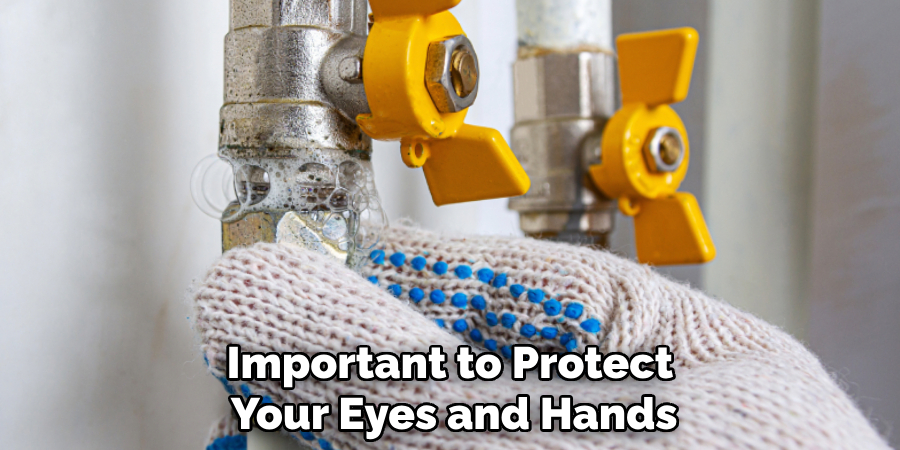
10 Easy Steps on How to Detect a Gas Leak
Step 1. Stay Alert to the Smell of Gas:
Natural gas is often odorless, but utility companies add a distinct sulfur-like or “rotten egg” scent to make it easier to detect leaks. If you notice this strong, unpleasant smell, it’s a clear indication that there may be a gas leak in your home or surroundings. Always trust your senses and investigate further if this odor is present.
Step 2. Listen for Hissing Sounds:
Gas leaks can sometimes produce audible signs. If there is a significant leak, you may hear a faint hissing or whistling sound from gas lines, appliances, or connections. These noises often indicate that gas is escaping under pressure. Take the time to listen carefully, especially near gas appliances like stoves, heaters, or pipes. Be sure to prioritize safety and avoid getting too close to the potential leak while investigating the sound.
If you detect a persistent hiss, it is important to take action immediately to prevent any potential hazards.
Step 3. Inspect for Physical Signs:
Look for visible signs that might indicate a gas leak. Common indicators include a white cloud or mist near a gas line, bubbles in standing water, or plants and vegetation that appear dead or discolored in an otherwise healthy area. Physical damage to a gas line, such as cracks, dents, or corrosion, can also signal a potential problem. Always exercise caution when inspecting for these signs and avoid touching or disturbing damaged components. If you notice these physical signs, immediately report the issue to the proper authorities or your gas company.
Step 4. Use a Gas Detector:
A gas detector is an essential tool for identifying the presence of gas leaks in your home or workplace. These devices are designed to detect combustible, toxic, or hazardous gases, providing an early warning to ensure safety. To use a gas detector effectively, turn the device on and allow it to calibrate according to the manufacturer’s instructions.
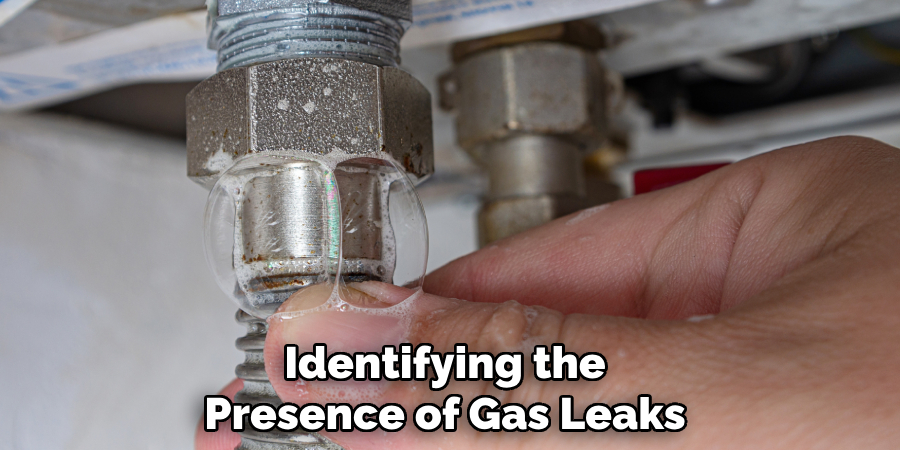
Slowly move the detector around areas where you suspect a leak, paying close attention to fittings, joints, or any damaged sections of a gas line. Many detectors will emit audible or visual alarms if gas is detected. Always follow the guidelines provided with your specific gas detector and ensure the device is maintained and tested regularly for accuracy. A reliable gas detector can be a crucial safeguard in preventing gas-related incidents.
Step 5. Apply Soap and Water Solution:
Mix a small amount of dish soap with water to create a soapy solution. Using a brush or spray bottle, apply the solution generously to the areas you suspect may have a gas leak, such as joints or connections. Observe these areas closely for any bubbles forming, which clearly indicates escaping gas. Work methodically and check all potential leak points to ensure nothing is missed. If you detect leaks, immediately address the issue safely and, if necessary, contact a professional.
Step 6. Check Your Utility Bill:
Reviewing your utility bill regularly can help detect unusual spikes in gas usage, which might indicate a potential leak. Compare your current bill with previous months to identify any unexpected increases that cannot be explained by seasonal changes or additional appliance use. Take note of the usage patterns and the cost per unit of gas. If the charges seem abnormally high despite consistent usage, it’s essential to investigate further.
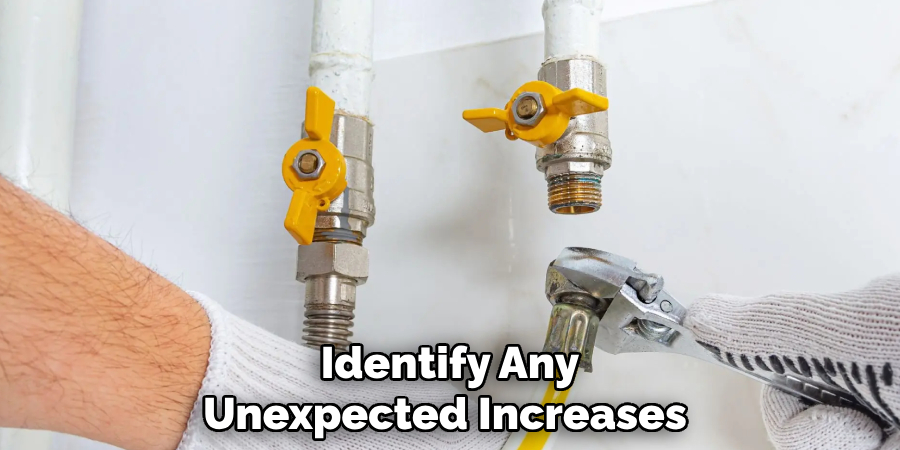
Contact your gas provider to clarify discrepancies and request a more detailed analysis. Monitoring your bill not only ensures accurate charges but also acts as a preventative measure for uncovering hidden issues.
Step 7. Evacuate the Area:
If you suspect a gas leak or detect the smell of gas in your home, evacuate the area immediately to ensure everyone’s safety. Do not attempt to locate the source of the leak or use any electrical devices, as this could ignite the gas. Avoid turning lights on or off, unplugging appliances, or using your phone inside the premises. Exit the building quickly and ensure all occupants, including pets, are safe outside. Once you are at a safe distance, contact your gas provider or emergency services to report the issue.
Step 8. Ventilate the Area:
If it is safe to do so and you have confirmed there is no longer an active gas leak, open all windows and doors to allow fresh air to circulate and dissipate any remaining gas. Ensure the area is well-ventilated before returning indoors. Do not use fans, air conditioning, or any electrical appliances to ventilate, as these could ignite residual gas. Always prioritize safety and wait for clearance from professionals if unsure about re-entering.
Step 9. Avoid Any Sparks or Open Flames:
Avoid creating any ignition source in the area to minimize the risk of an explosion. Do not light matches, use lighters, or ignite any open flames. Refrain from turning on or off light switches, electronics, or other electrical devices, as these could generate sparks. Even small actions, such as using a mobile phone in the vicinity, can pose a danger if there is still gas in the environment. Always exercise caution and follow the guidance of professionals to ensure the area is completely safe before resuming normal activities.
Step 10. Contact a Professional Immediately:
If you suspect a gas leak or detect any unusual smell, it is crucial to contact a licensed professional right away. Call your local gas company or certified technician to inspect and address the issue immediately.
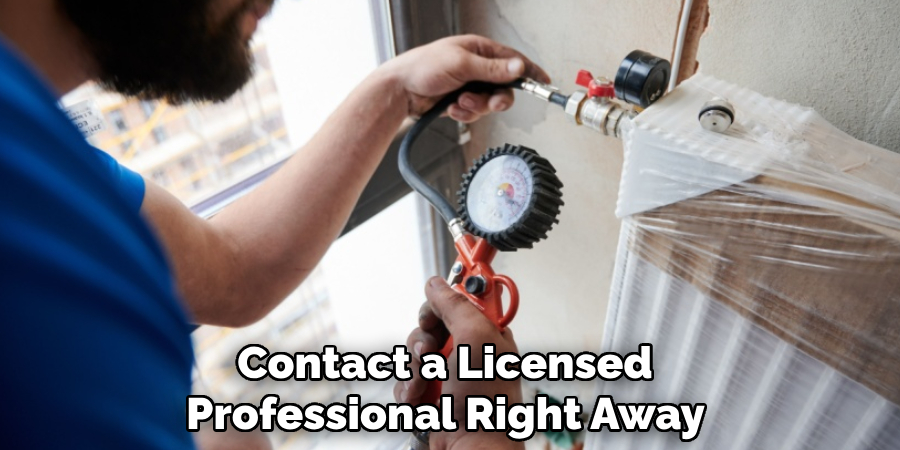
Provide them with all necessary details about the situation, including any noticeable odors, hissing sounds, or other signs of a potential leak. Avoid addressing the issue alone, which could lead to serious safety risks. Trusting an expert ensures the problem is handled efficiently and safely, reducing the risk of further complications.
Following these tips can help prevent gas leaks in your home and keep yourself and your family safe.
Conclusion
How to detect a gas leak early is crucial to ensuring the safety of your home and loved ones.
Stay vigilant by paying attention to signs such as unusual odors, hissing sounds, or unexplained increases in your gas bill. Additionally, installing gas detectors in your home can provide an added layer of security, offering timely alerts to potential leaks. Remember, if you suspect a gas leak, prioritize your safety by immediately evacuating the area and contacting a professional.
Quick action and awareness can make all the difference in preventing potential hazards.
